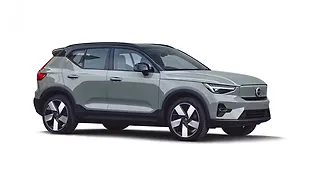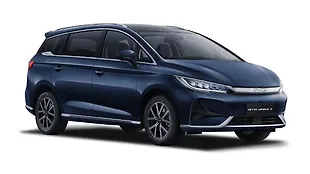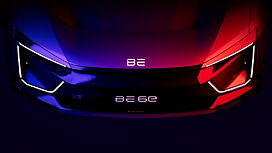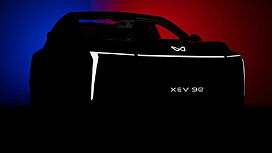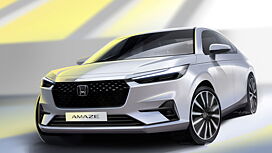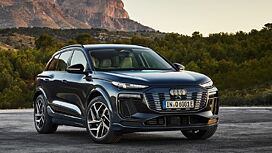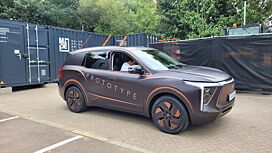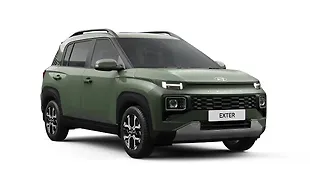Overview

The Verna could have offered the Linea some good competition but it lost out on a lot of brownie points, thanks to its plain Jane looks. Now though Hyundai has launched the Verna Transform, a facelift. So we pit it against the Linea to fi nd out which is the better car to buy of the two
Hyundai's Verna was never acclaimed for its looks and a facelift has been needed since inception. Now, a year after AUTO BILD INDIA fi rst revealed the Verna Transform (Vol1 Issue 26), the company has launched it in India. The Fiat Linea meanwhile has been having a good time with brisk sales. So we pitched these two diesel sedans against each other to find out which one’s the better car to buy.
Exterior & Interior
The Verna Transform gets a redesigned front, including a new bumper grille and headlamp combo. Although the changes are quite minimal, the Hyundai now has a sporty edge. However at the back, changes are limited to a new bezel for the lamps and a large and fancy chrome exhaust tip. The new Verna surprisingly has lost a few millimeters in length during this ‘transformation’. In profi le too, the only visible difference are the LEDs on the ORVMs. The Linea on the other hand envisages Italian design fl air with large headlamps and a strong and well defi ned shoulder line, looking more polished than the boy racer looks of the Verna.
Inside the Verna, you are greeted by the same dash as before but with a redone instrument panel. While the blue illumination all around looks good, the fake wood fi nish isn’t really exciting. The switches on the dash operate with positive clicks and feel good. The quality of plastics too are better than in the Linea. The Hyundai also boasts a better driving position, thanks to better adjustability options for the seat and steering. However the seat itself is not very comfortable. The Verna's design offers better all round visibility too.
Inside the Linea, you are greeted by a two-tone dash as well. The instrument panel looks good and the red illumination looks better than the Hyundai's blue. The steering wheel on the Linea is a much meatier unit and also houses controls for Bluetooth telephony and the audio system. It also offers a more comprehensive trip computer which can be operated by a button on the wiper stalk. The seats on the Linea are more comfortable units too and can be adjusted for height as well. Not to mention the lever is easier to use than the rotary knob of the Verna. The Linea with the option pack also offers more features like airbags and a rear AC vent. Space at the back however is better in the Verna.
The Verna is a more softly sprung car than the Linea and absorbs bumps and undulations better at low speeds, transferring very little to the cabin. However as speeds increase, it tends to wallow over even slightly undulated surfaces. It's not too planted either. As the undulations get more severe the Verna begins to feel completely out of sorts.
It is here that the Linea fi ghts back with a superior ride package. The car feels planted at high speeds and it takes quite a bit to shake up the Linea and make it lose its composure. Being tauter than the Verna also means that the Linea behaves better through corners, especially when making quick direction changes.
Adding to this superior ride and handling package is the steering feel, which is more positive. Sure it is heavier, but it also gives more feedback.
The Verna on the other hand has a lighter steering setup, which is brilliant when manoeuvring in the city and for parking it in tight spots. But on the move it feels lifeless, especially if you enjoy going around twisties. However if you primarily drive around busy city streets, you will love the shorter turning ability of the Verna. Both cars offer equally good ground clearance, nonetheless. None of the two touched their respective underbodies on rough patches or any of the giant speed breakers that we encountered.
The Linea does have a lower nose though so you need to be more careful, particularly when you brake hard for a speed breaker or a bump and the car dives a bit as its bigger weight shifts to the front.
Engine & Gearbox

Fiat Linea The Linea is powered by the famed 1.3-litre Multijet engine. However t is not as power packed as the Verna's engine
While the Verna sports a 1.5 common rail diesel, the Linea's engine displaces 1248cc. Start them up and both offer a prominent diesel clatter with the former’s motor feeling smoother. Slot them into gear and the Verna’s gearshift feels better too than the rubbery shifts on the Linea. Once moving the Hyundai accelerates faster and overall, the car feels lighter too. This is primarily because the Verna offers more power but is smaller than the Linea both in size and weight.

Hyundai Verna Transform The torquier engine is more usable
Meanwhile the Linea's power defi cit hampers its driving characteristics. While the Verna has enough grunt to pull through from low revs in high gear, the progress in the Linea is at a snail’s pace. This results in more frequent downshifting in the Linea. However when it comes to cruising on long straight stretches both cars offer similar performance.
Dimensions
Fiat Linea (mm) |
|
Hyundai Verna Transform (mm) |
|
Scorecard & Verdict
Scorecard
Body: Both cars are equally well matched on the space equation though the Hyundai does edge the Fiat out when it comes to rear space. It also boasts of better build quality and the quality of materials used for the interiors. The Fiat though offers a much bigger boot. The Linea also offers a lot more safety equipment, which the Verna doesn't even offer as an option.
Drive: The Hyundai is the more powerful of the two here and this shows in its acceleration and top speed runs. It also has better roll-on times overall, a measure of its driveability. The Linea on the other hand is more fuel efficient and offers a better range. However the gearbox on the Verna feels a lot better to use compared to the rubbery unit on the Linea.
Comfort: The Verna's soft suspension set up is good at low speeds, but it gets nervous as speeds climb. The Fiat on the other hand boasts of a better ride and handling package. The Linea also scores nifty points under this head, thanks to the loads of equipment it offers in the top-of-the-line Emotion PK variant.
Dynamics: The Verna boasts of a light steering. While this helps it score in the city, the steering starts feeling vague as speeds rise. The Linea on the other hand has a heavier steering that offers more feedback. However both cars score equally in most measures except for the turning circle diameter, which is better on the Verna
Cost: The Hyundai costs less to buy, but then it's not as well equipped as the Linea. The Verna will also offer a better value than the Linea when you try to sell it at a later date. The Hyundai also boasts of an unlimited mileage warranty rather than the 75,000km offered by Fiat.
Verdict
The Linea offers a lot more comfort and safety equipment. It has superior ride and handles better too, combined with the famed Multijet diesel engine. But there's a signifi cant difference between the Linea's 75,000km warranty compared to the Verna's unlimited mileage warranty. This, added to the Hyundai's better resale, sees the Fiat lose out, despite being a better product.
![हुंडई वर्ना [2011-2015] इमेज हुंडई वर्ना [2011-2015] इमेज](https://imgd.aeplcdn.com/272x153/cw/ec/9695/Hyundai-Verna-20112015-Exterior-96265.jpg?wm=0&q=80)











